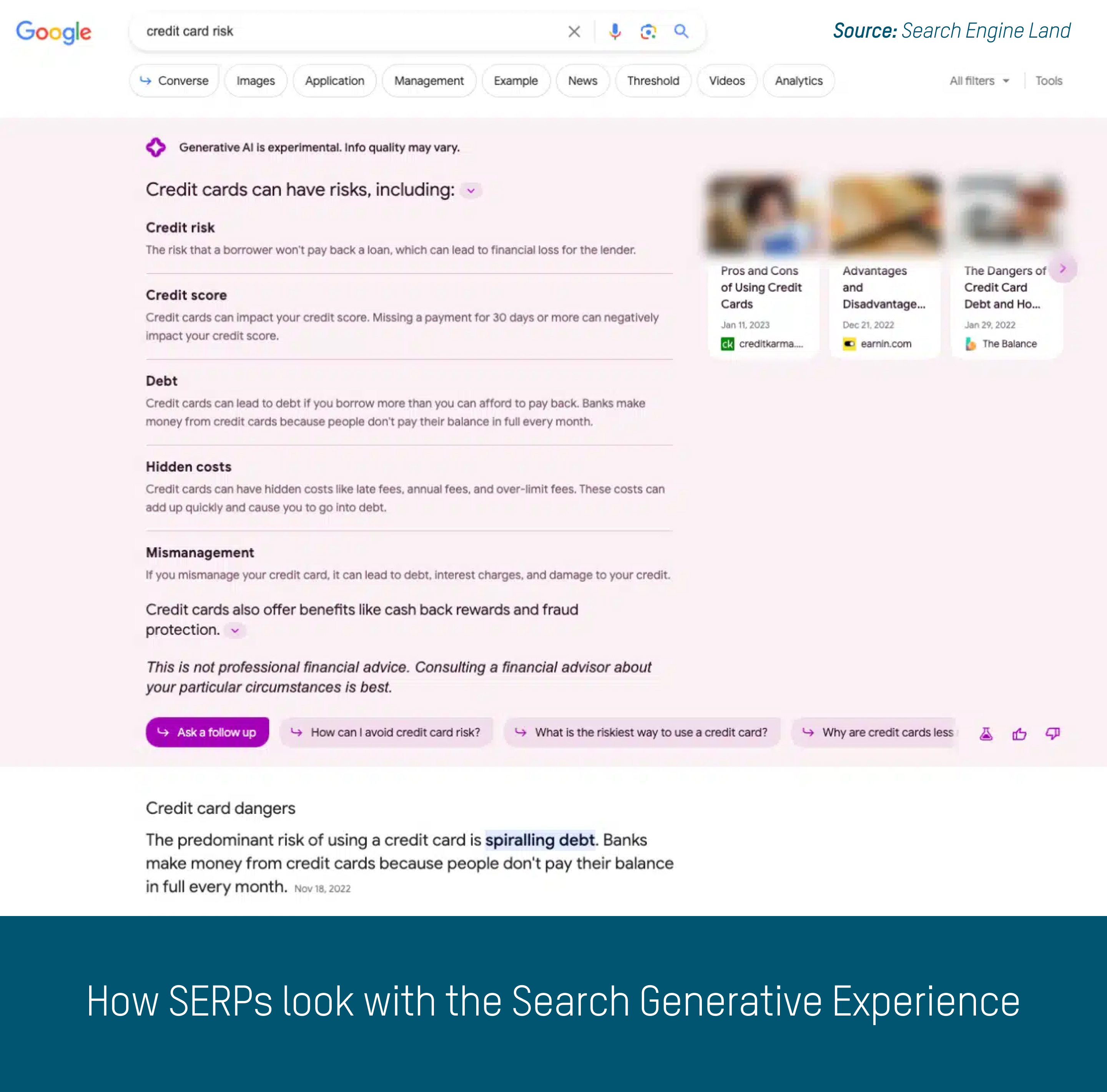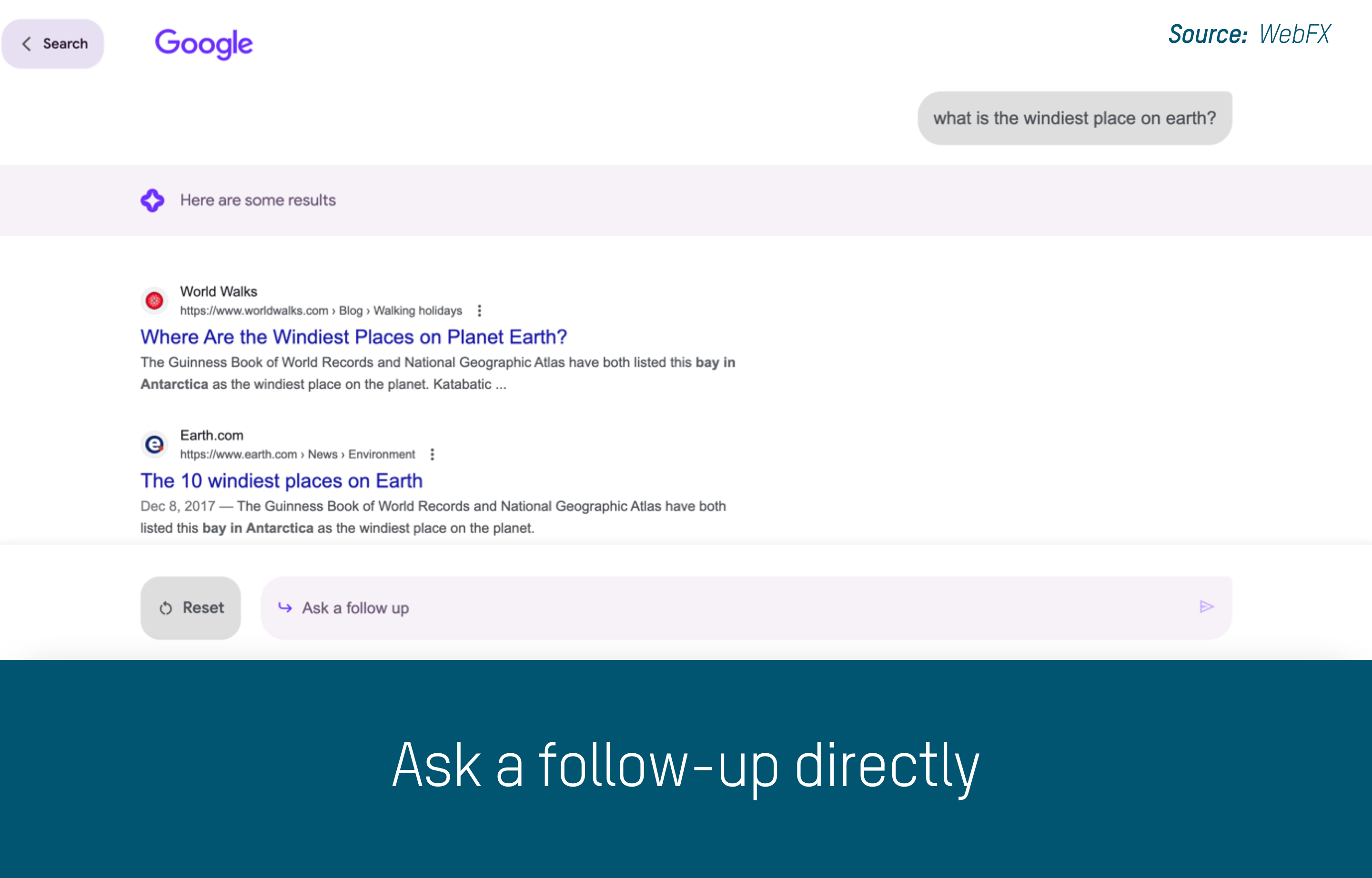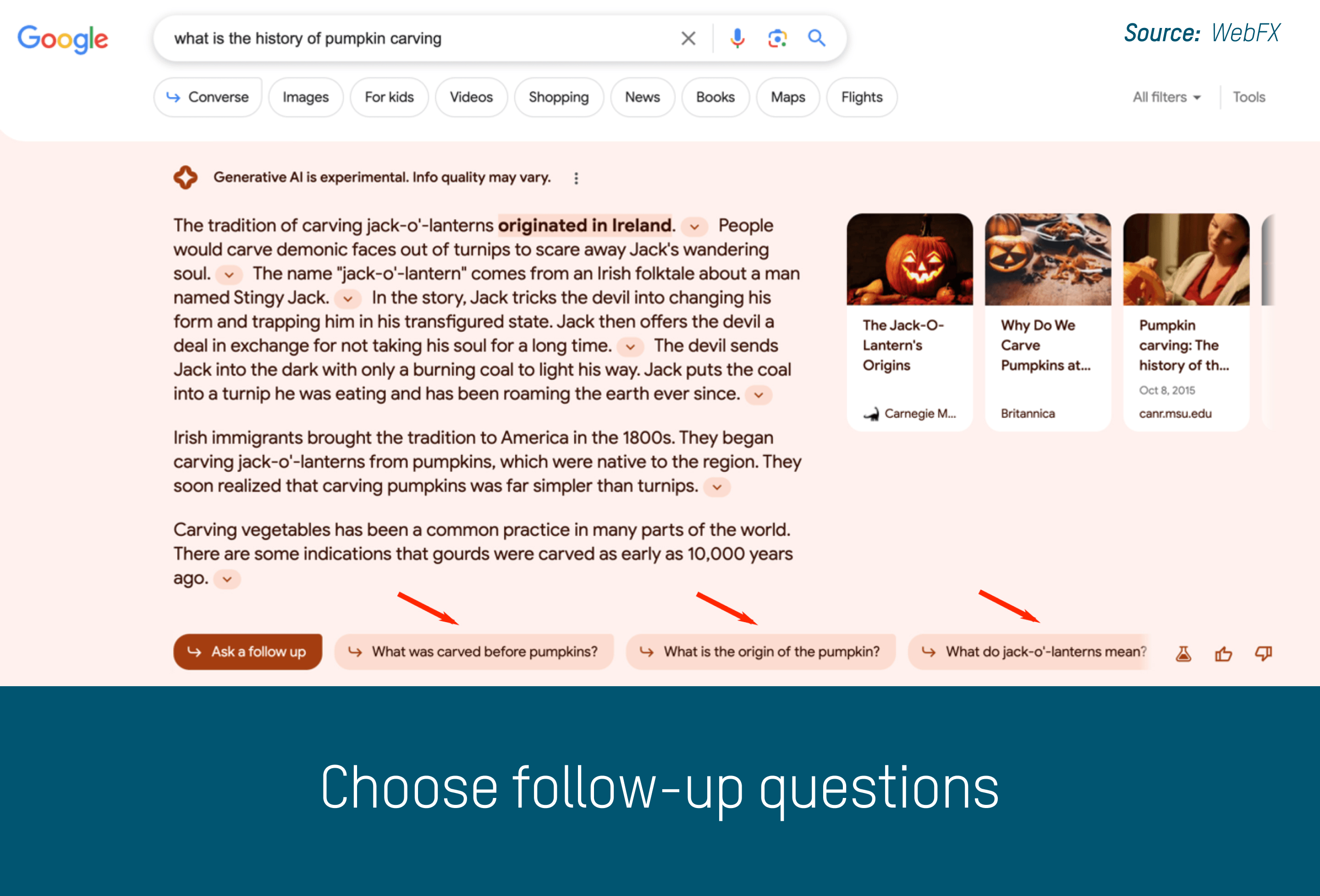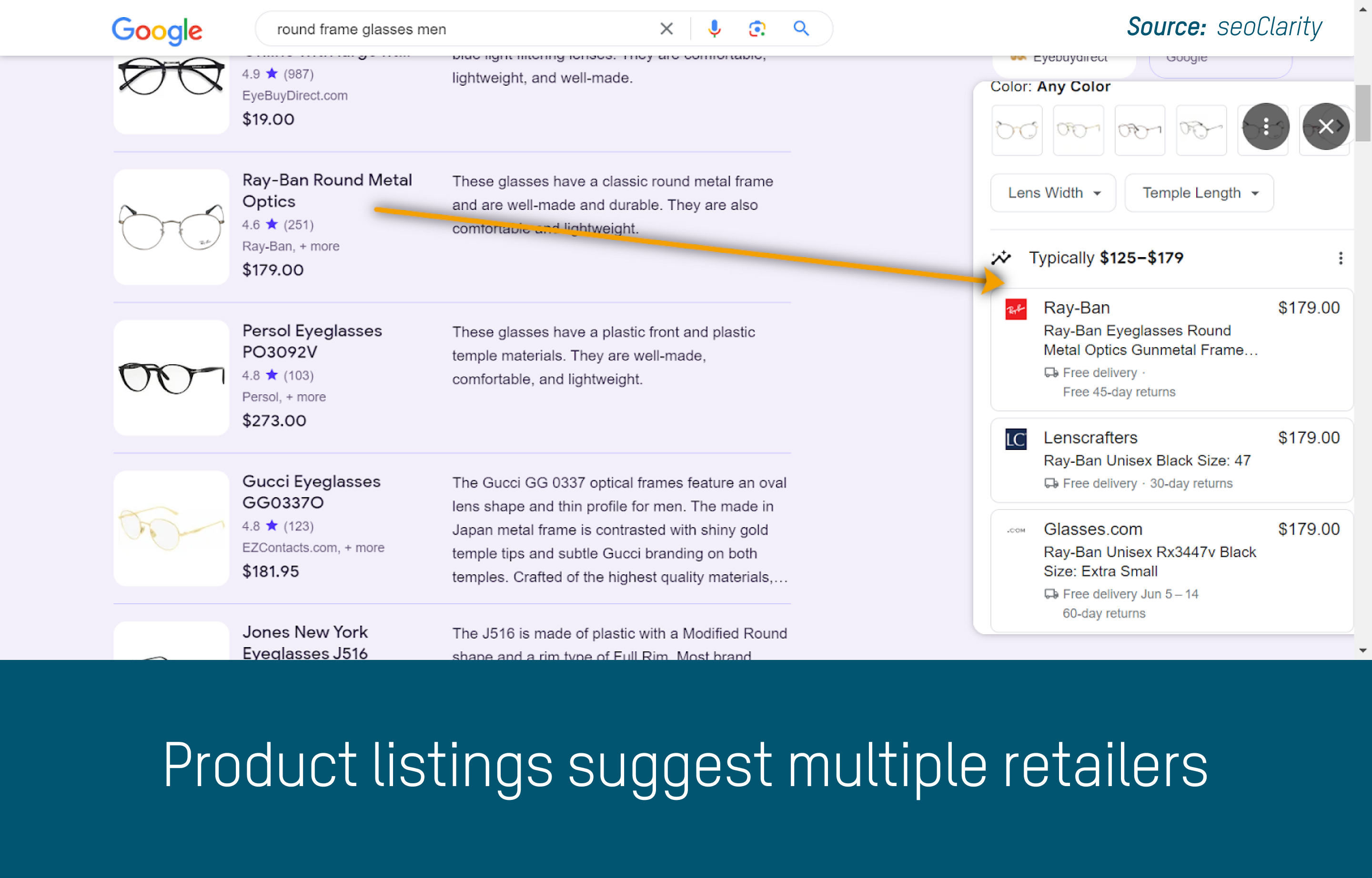Over the years, Google has integrated various natural language processing (NLP) models to enhance its search experience, from BERT (Bidirectional Encoder Representations from Transformers) to MUM (Multitask Unified Model). Now, Google is making another groundbreaking integration—experimenting with generative artificial intelligence (AI) to enhance how users seek, as well as engage with, information online.
Bringing the power of generative AI into Search, Google rolled out the Search Generative Experience (SGE) earlier this year through its Search Labs program. The SGE introduces a new approach to organizing and presenting results to searchers, along with the promise of higher-quality information. It’s still under testing, but the SGE is currently available to a limited audience.

In terms of its algorithm, nothing is set in stone yet, as changes are being made regularly to the SGE. Luckily, Google has provided valuable insights into how the implementation of generative AI in Google Search will impact the world of browsing and SEO at large.
Here’s what you need to know about Google’s recent innovation:
Google Search meets ChatGPT
Google’s integration of the SGE won’t completely change the look and feel of its existing search engine result pages (SERPs). The traditional search results, both organic and sponsored, will still be there, albeit slightly pushed down, with the SGE taking the top spot of the SERPs.
Through generative AI, results are AI-generated and presented in a chat-like format, à la ChatGPT. They’re delivered in snapshots or AI-powered overviews, composed of 5 informational features. Compared to traditional search methods, SGE results are expected to be more thorough, interactive, and faster.
While the SGE shows promise, one thing’s for sure—it won’t be replacing traditional search anytime soon. The SGE integration simply aims to offer an alternative and more sophisticated approach to searching for information.
So, what else should we expect from Google's Search Generative Experience?
The result is unique for each query
As mentioned earlier, the results are delivered in snapshots, offering searchers an overview of answers to their queries. Generative AI helps in delivering these snapshots to searchers, which come in 5 parts: summary of the answer, list of related articles, option for a follow-up question, and suggested follow-up queries.

With the SGE, each user gets a unique result, even if they type in the same query or keywords, unlike traditional search results. This is particularly true for the carousel of suggested sources within the snapshots. According to Search Engine Land’s findings, there was an average 57% overlap in the cited sources, but never the exact same recommended sources for each search query.
In addition, the information in the snapshots is totally different from the organic and sponsored search results. From an SEO perspective, this is beneficial to brands because it provides more opportunities for them to have their content discovered in the SERPs. The only issue right now is that there are no definite guidelines on how they can be featured in the SGE results.
Search becomes more conversational
SGE is Google’s attempt to make the search experience more conversational, drawing from the concept of ChatGPT. To achieve a more natural exchange of information within the search engine, the SGE allows users to ask follow-up questions without having to provide context. Powered by SGE's conversational AI, this function enables users to directly contact Google, making searching more organic and in-depth.

Besides this function, there's also a series of suggested follow-up questions found at the bottom of each snapshot. This SGE function eliminates the need for users to type out their next queries. Using generative AI in search, Google suggests a set of questions related to the original search query. This is Google’s attempt to provide searchers with the answers they need in just a few clicks.

In a way, this SGE function informs brands about what they can do to improve their SEO content performance. Through these follow-up questions, they decide which information to incorporate into their content or website to drive traffic and engage users. Basically, the suggestions act as a guide for brands when creating content for the SGE.
Traditional results may lose traffic
With the SGE in place, the click-through rate (CTR) is expected to drop if content isn’t featured in the AI snapshot (even if they rank high in the regular search results). While the organic search results remain in the SERP, searchers will naturally pay more attention to results above the fold. This can impact the performance of content ranking well in traditional search. The key here is to start optimizing content for SGE, and one way is through images.
The visible sources on the carousel in the snapshot provide a great chance for brands to boost their website traffic. But the key factor lies in the chosen image, which, alongside the headline, serves as a powerful tool to grab attention (much like video thumbnails). The more eye-catching the images are, the greater the anticipated CTR.
Product listings don't directly point to retailers
Similar to the carousel of sources, the product listings in the SGE are also unique for each search query. Aside from that, these product listings don’t match the ones on the organic shopping results, as well as the sponsored ones in the traditional SERPs. This helps e-commerce brands get noticed in the SERPs, especially if they aren’t ranking well in traditional search.

Aside from that, the traditional listings don’t directly point to specific retailers, compared to traditional product listings. Instead, clicking the product listings will open a sidebar with filters and purchase options. Through this, users can read through the information without having to leave the search result page. This can also potentially drive relevant traffic to different e-commerce sites than before.
It keeps changing
With the SGE in place, basic SEO principles haven’t lost their value since traditional results will still be part of the new SERP. However, optimizing for the SGE seems like the smartest decision for brands. Currently, there is no single strategy for optimizing for SGE since it’s still in its early stages of testing. Nevertheless, you can use these insights we’ve provided to stay ahead of the curve and prepare for what's to come.



